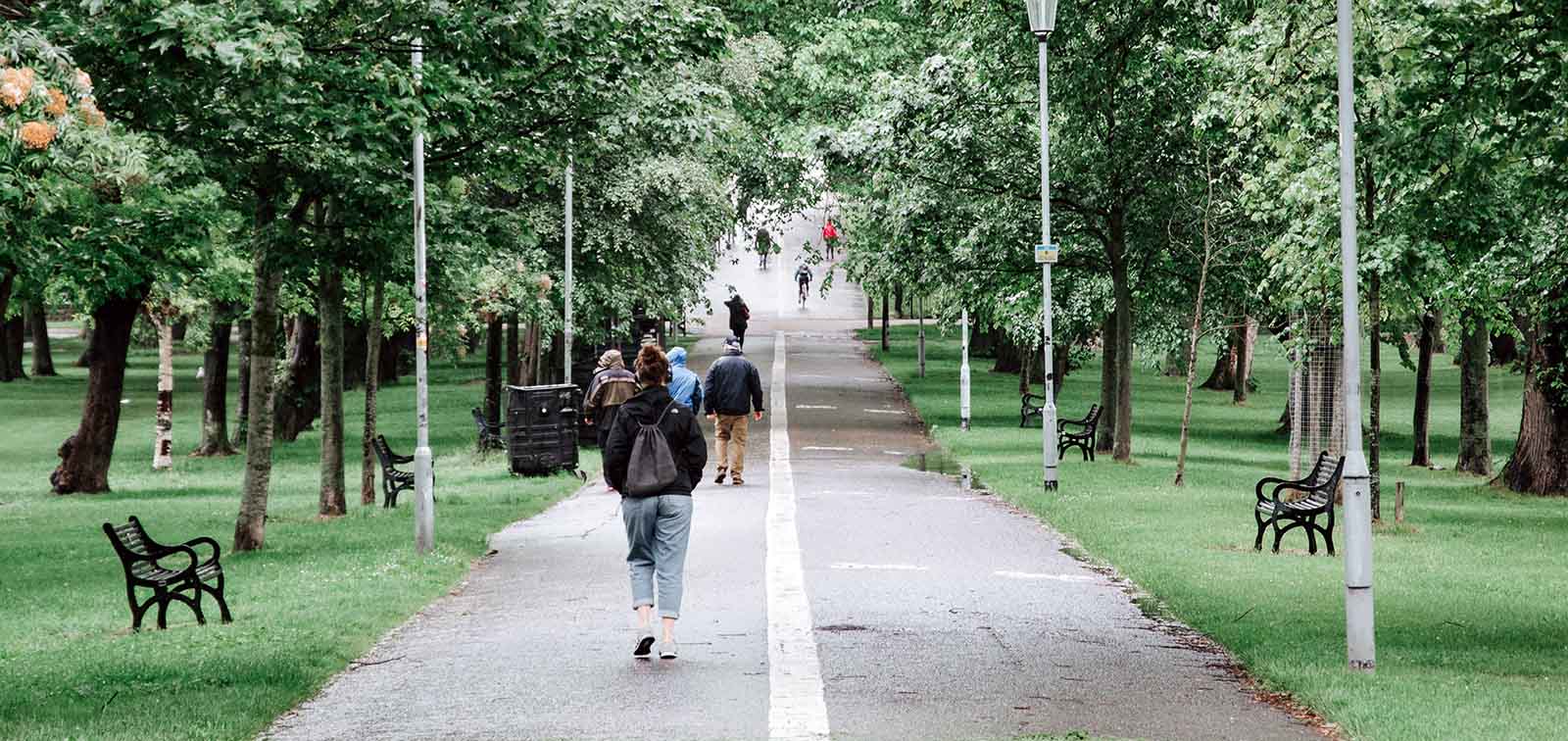A Large Study Indicates How Cities can Promote Walking for Travel
Coinciding with the European Mobility Week, a study performed in seven European cities focuses on walking for travel, a strategy to increase physical activity in cities
18.09.2019
How to design cities that encourage physical activity among the citizens? Coinciding with the European Mobility Week, the Barcelona Institute for Global Health (ISGlobal), an institution supported by ”la Caixa”, has published a study describing the urban characteristics that encourage people to choose walking for travel, instead of a motorized vehicle, with the benefits this entails: more physical activity and less air pollution, which result in improved health.
Lack of physical activity is among the 10 leading risk factors for mortality, worldwide. The World Health Organisaton (WHO) recommends adults to do at least 150 minutes of moderate-intensity physical activity –which includes walking– or 75 minutes of vigorous-intensity activity throughout the week.
The study, published in the Environmental Health Perspectives journal, forms part of the PASTA (Physical Activity through Sustainable Transport Approaches) project and was performed with data from 7,875 adults from seven European cities: Antwerp (Belgium), Barcelona (Spain), London (United Kingdom), Örebro (Sweden), Rome (Italy), Vienna (Austria) and Zurich (Switzerland).
The participants answered an online questionnaire on their walking habits: how many hours a week they walked, their criteria to choose a specific transport mode, or the availability of a motorized vehicle or bicycle, among others. The researchers also used public geographic information to collect data on the built environment in which the participants live and work or study.
Mireia Gascon, ISGlobal researcher and first author of the study, stresses that “this is the first study to address not only the built environment at the residence, but also that of the workplace or study place, providing a more accurate picture of the environment people are exposed to”.
Walking and Public Transport
The results show that people that walk the most are those that live in areas with good public transport service and a higher density of households, services and installations. In fact, living in this type of urban environment was associated with a 12% increase in minutes walked every week, as compared to people living in other environments. Although lower, this association was also observed with the workplace or study place.
The participants that most valued safety, privacy and lower exposure to air pollution were those that walked more minutes per week. On the contrary, those with a high education level and access to a car were those that walked the least. People that did not work or study walked 65% more minutes per week, as compared to those that worked full-time.
On average, participants from Barcelona were those that walked the most (259 minutes per week), while those from Antwerp walked the least (50 minutes per week) due to the high use of bicycles in this city.
“Although walking is an easy and healthy way of achieving the recommended levels of physical activity, the growing use of motorised vehicles has contributed to decreasing levels of physical activity in the general population, and has generated health additional problems related with traffic, such as air pollution and noise”, explains Gascon.
Mark Nieuwenhuijsen, study coordinator and director of the Urban Planning, Environment and Health Initiative, underlines that the results “support previous studies on the role of urban planning and transport in promoting walking , and provides new information to help achieve sustainable, healthy and liveable cities, in accordance with the Sustainable Development Goals (SDGs)”. These strategies include “improving the nearby residential (and work/study) built environment with a good public transport service and a diverse offer of facilities,” he adds.
Reference
Mireia Gascon, Thomas Götschi, Audrey de Nazelle, Esther Gracia, Albert Ambròs, Sandra Márquez, Oriol Marquet, Ione Avila-Palencia, Christian Brand, Francesco Iacorossi, Elisabeth Raser, Mailin Gaupp-Berghausen, Evi Dons, Michelle Laeremans, Sonja Kahlmeier, Julian Sánchez, Regine Gerike, Esther Anaya-Boig, Lucint Panis, Mark Nieuwenhuijsen. Correlates of walking for travel in seven European cities: the PASTA project. Environmental Health Perspectives. https://doi.org/10.1289/EHP4603. September 2019.



